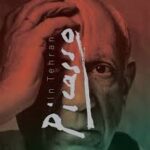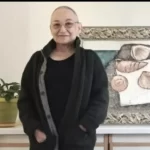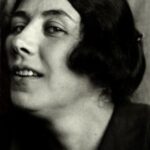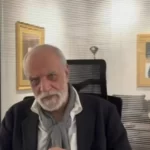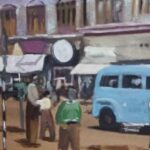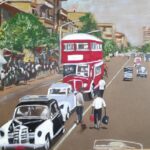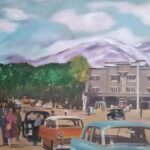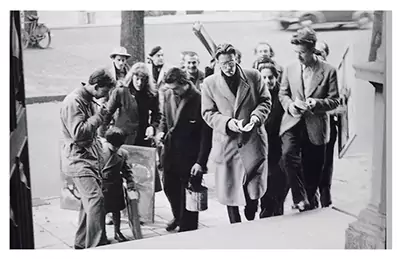
The CoBrA movement was a European avant-garde art movement founded in Paris in 1948 and remained active until 1951. The name “CoBrA” was derived from the first letters of three cities: Copenhagen, Brussels, and Amsterdam, as its founders were from Denmark, Belgium, and the Netherlands.
CoBrA was a reaction against the rigid and structured nature of modern art following World War II. This movement emphasized spontaneous expression, childlike forms, and raw, intuitive paintings. CoBrA artists drew inspiration from folk art, primitive art, and children’s drawings, seeking to free themselves from any traditional artistic constraints.
CoBrA’s style and influence were closely related to European abstract expressionism and were influenced by artistic movements such as Surrealism, tribal art, and children’s art. The works of this movement often featured vibrant colors, organic shapes, free lines, and primitive, irregular forms. Artists painted directly on canvas without prior planning, aiming to escape traditional artistic limitations.
Key Figures of the CoBrA Movement:
Asger Jorn (Denmark) – Painter and theorist
Karel Appel (Netherlands) – Painter and sculptor
Constant Nieuwenhuys (Netherlands) – Painter and architect
Pierre Alechinsky (Belgium) – Painter
Corneille (Netherlands) – Artist
Despite its short lifespan, the CoBrA movement left a lasting impact on contemporary art, graphic design, and conceptual design. Many of its members continued their artistic pursuits individually, profoundly influencing post-war European art.
Visual Characteristics of CoBrA Works:
Vivid and bright colors: Artists frequently used primary colors (red, blue, yellow) with bold contrasts.
Rough and irregular brushstrokes: Paint was applied instinctively and expressively without precision.
Childlike and primitive imagery: Many works resembled children’s drawings or tribal art, featuring simple shapes and surreal characters.
Organic and figurative forms: Faces, animals, or imaginary creatures were depicted in abstract and irregular styles.
A sense of disorder and freedom: CoBrA artworks lacked symmetry or strict composition, appearing dynamic and unrestrained.
Prominent CoBrA Artists and Their Works:
Asger Jorn: Known for his bold brushstrokes, vivid colors, and abstract forms.
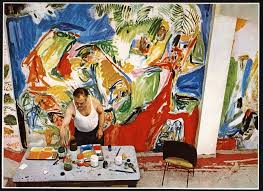
Karel Appel: His works featured simplified figures, childlike shapes, and bright colors.
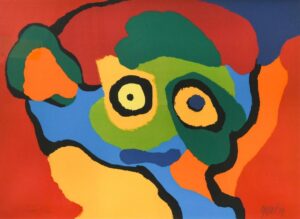
Pierre Alechinsky: His works blended abstract painting with calligraphy, often featuring free-flowing lines and organic forms.
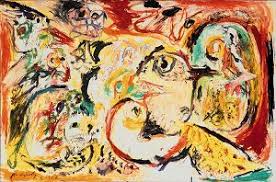
Constant Nieuwenhuys: In addition to painting, he was involved in architecture and urban design, creating the visionary project “New Babylon,” a utopian city for free artists.
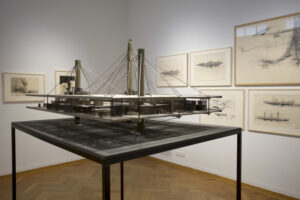
Lucebert: A poet and painter known for experimental poetry and raw, childlike visual forms similar to Keith Haring’s works.
CoBrA’s Influence on European Art:
After its dissolution, CoBrA significantly impacted later artistic movements, including:
Neo-Expressionism in Germany (e.g., Georg Baselitz and Anselm Kiefer)
Art Brut, promoted by Jean Dubuffet
Street art and graffiti, later seen in the works of Keith Haring and Jean-Michel Basquiat
Reasons for CoBrA’s Short Lifespan:
Anti-structural and rebellious nature: CoBrA artists opposed established artistic norms, which made their work difficult for the mainstream art world to accept.
Cultural differences and internal disunity: Members from different countries had varying artistic approaches, leading to a lack of cohesion.
Severe criticism and lack of institutional support: Critics often dismissed CoBrA’s works as too raw or chaotic, and major galleries hesitated to exhibit them.
Shifting artistic trends: With the rise of American Abstract Expressionism and European Tachisme, CoBrA struggled to gain widespread recognition.
Individual success of its members: Many CoBrA artists later pursued independent careers, causing the group to dissolve quickly.
Despite its brief existence, CoBrA left a profound impact on expressionist painting, conceptual art, and Art Brut, later being recognized as an influential movement in modern art history.
The Lasting Legacy of CoBrA:
Although CoBrA lasted only a few years, its members, such as Alechinsky and Constant, continued to develop their artistic styles, influencing later movements like Neo-Expressionism and street art. In this sense, CoBrA was a short-lived yet deeply influential chapter in modern art history.
Traces of CoBrA in Contemporary Iranian Art:
Although CoBrA was not directly recognized in Iran’s modern art history, some Iranian artists have exhibited characteristics similar to the movement, such as vibrant colors, primitive forms, and expressive abstraction.
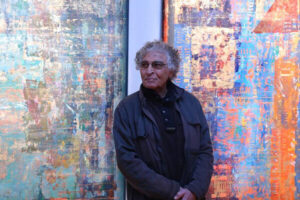
- Masoud Arabshahi:
Known for his abstract paintings and use of bold colors in the 1960s and 1970s, his works share similarities with CoBrA’s expressive and primal forms.
- Mohammad Ehsaei:
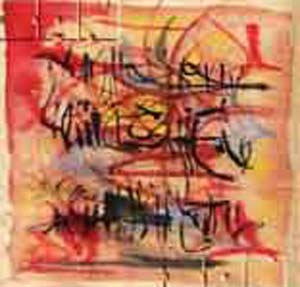
A prominent contemporary Iranian painter whose abstract forms and expressive techniques resemble elements found in European avant-garde movements.
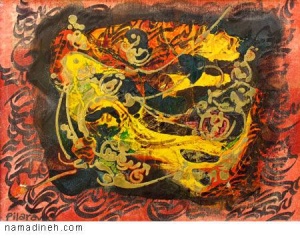
- Faramarz Pilaram:
His works incorporate vibrant colors and spontaneous, abstract compositions, aligning with CoBrA’s emphasis on raw expression.
Traces of CoBrA in Contemporary Iranian Sculpture:
While CoBrA’s influence on Iranian painting is subtle, some parallels can be found in sculpture:
Similarities:
Intuitive and spontaneous creation: Self-taught and naïve art movements in Iran share CoBrA’s emphasis on instinctive creation.
Use of unconventional materials: Iranian sculptors, like CoBrA artists, experiment with recycled materials and unconventional media.
Incorporation of folk and traditional elements: Similar to CoBrA’s fascination with indigenous art, Iranian sculptors integrate cultural motifs into their work.
Differences:
Cultural and historical roots: While CoBrA emerged as a reaction to post-war European modernism, Iranian sculpture draws more from Eastern artistic traditions.
Less focus on childlike forms: Unlike CoBrA, Iranian sculptors often lean toward symbolism, minimalism, and conceptualism.
Conclusion:
Some contemporary Iranian sculptors, such as Parviz Tanavoli (with his “Nothing” series) and Siah Armajani, exhibit free-form abstraction and material experimentation reminiscent of CoBrA. However, these influences are more incidental than direct.

*Houra Khakdaman – artist and Art Critic
article links:
https://tofigheghtesadi.ir/%da%a9%d9%88%d8%a8%d8%b1%d8%a7%d8%9b-%d8%a7%d9%86%d9%81%d8%ac%d8%a7%d8%b1-%d8%b1%d9%86%da%af-%d9%88-%d9%87%d8%b1%d8%ac%d9%88%d9%85%d8%b1%d8%ac-%d8%ae%d9%84%d8%a7%d9%82%d8%a7%d9%86%d9%87/
https://www.honaronline.ir/%D8%A8%D8%AE%D8%B4-%D8%AA%D8%AC%D8%B3%D9%85%DB%8C-4/199599-%D8%A7%D9%86%D9%81%D8%AC%D8%A7%D8%B1-%D8%B1%D9%86%DA%AF-%D9%87%D8%B1%D8%AC-%D9%88%D9%85%D8%B1%D8%AC-%D8%AE%D9%84%D8%A7%D9%82%D8%A7%D9%86%D9%87-%D8%AF%D8%B1-%D8%AC%D9%86%D8%A8%D8%B4%DB%8C-%DA%A9%D9%87-%DA%A9%D9%88%D8%AA%D8%A7%D9%87-%D8%B2%DB%8C%D8%B3%D8%AA-%D8%A7%D9%85%D8%A7-%D9%87%D9%86%D8%B1-%D8%B1%D8%A7-%D8%A8%D8%B1%D8%A7%DB%8C-%D9%87%D9%85%DB%8C%D8%B4%D9%87-%D8%AA%D8%BA%DB%8C%DB%8C%D8%B1-%D8%AF%D8%A7%D8%AF
